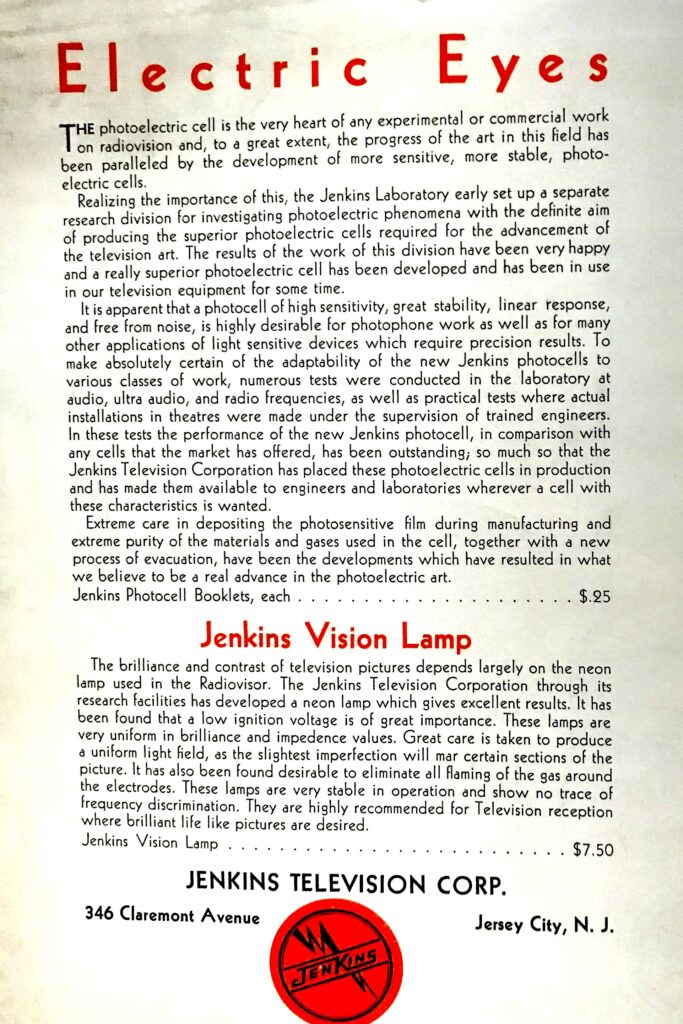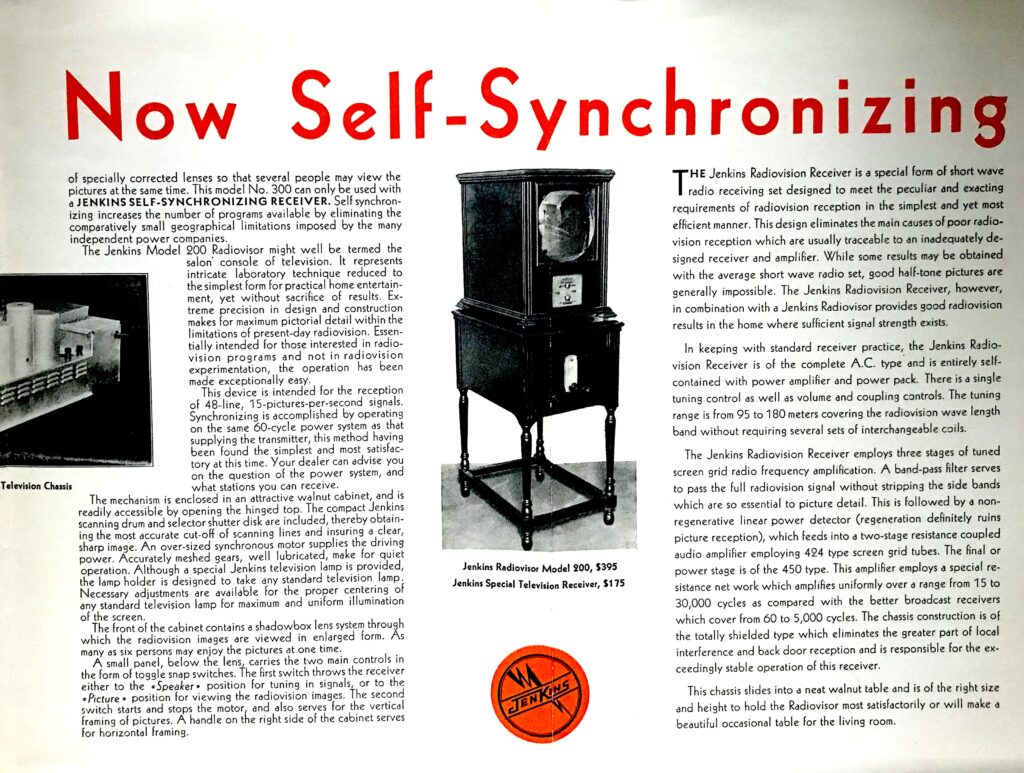by Bart Lee, K6VK, CHRS Archivist:
“THEY CALLED IT RADIOMOVIES ” By David Lachenbruch, TV GUIDE. July 3, 1971 at p. 5 ff. “It was 1928, and among the stars were Jacqueline and Master Fremont, Miss Constance and ‘Dainty Little Jane Marie’
Lachenbruch wrote: “Although American television generally reckons its birth from the post-World War Il period of the late 1940s, the first wave of TV excitement actually swept the country when Sid Caesar was 6 years old, Jackie Gleason was 12, Johnny Carson and Merv Griffin were 3 — and eight years before the blessed event in the Cavett household. It’s been all but forgotten, but from 1928 through 1932, thousands of adventurous radio amateurs huddled in darkened rooms to squint at dim black objects cavorting across tiny pink screens.
“The Depression and advancing technology combined to kill off the early boomlet of “mechanical” television. But the furor over primitive ‘‘radiovision’’ spurred a major industry-wide crash program which resulted in the development of television as we know it today.
“The name of Charles Francis Jenkins (Charles Francis who?) has not gone ringing down the corridors of scientific history. Yet he occupied a unique position as the first real television broadcaster.
“’We began broadcasting radiomovies July 2, 1928, on a regular schedule,” Jenkins wrote in 1929. ***'”
“Charles Francis Jenkins died in 1934 at the age of 66, earning a respectably restrained obituary on an inside page of The New York Times highlighting his contributions to motion-picture projection. Interest in television then was high only in corporate laboratories. And in most history books on communications, a scant paragraph or footnote is generally devoted to the man who established the first regular television service in the United States and in the world. A man who forecast 42 years ago [as of 1971, i.e. 1929]:
“’The folks in California and Maine, and all the way in between, will be able to see the inauguration ceremonies of their President in Washington, the Army and Navy games on Franklin Field, and the struggle for supremacy in our own national sport, baseball. [p.9]’”
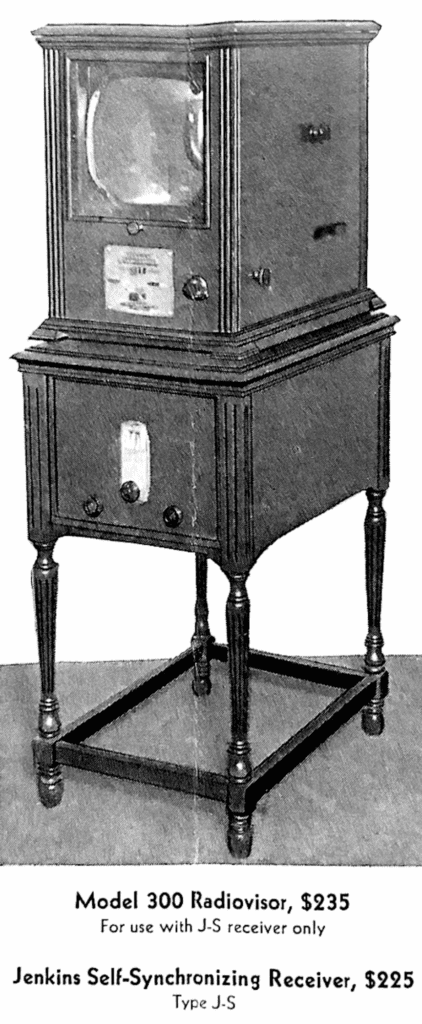
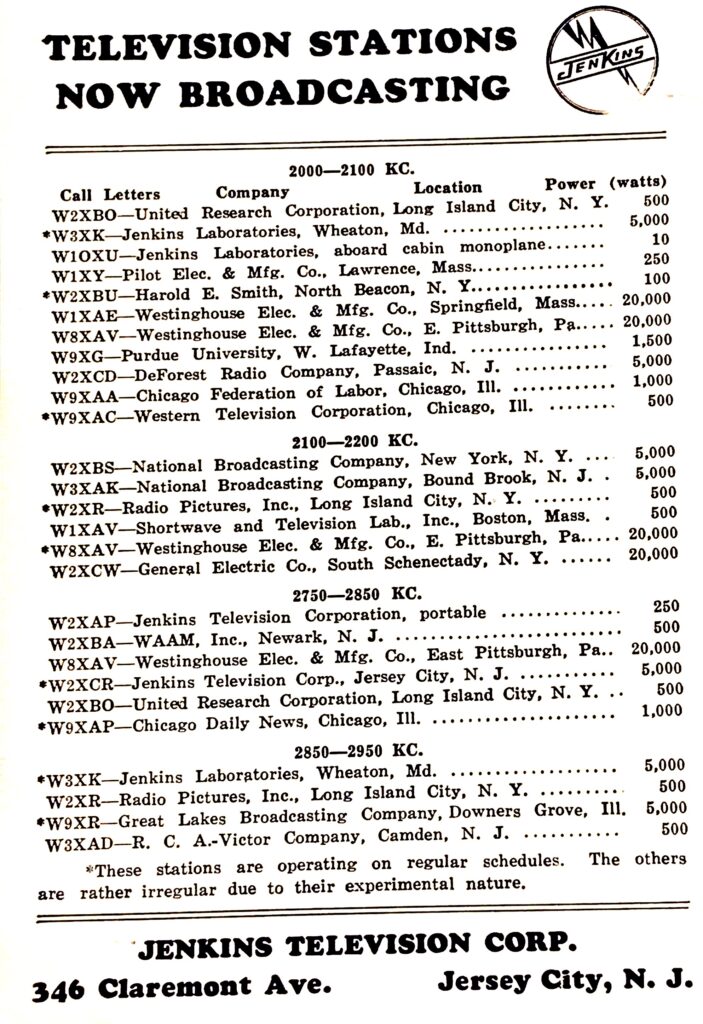
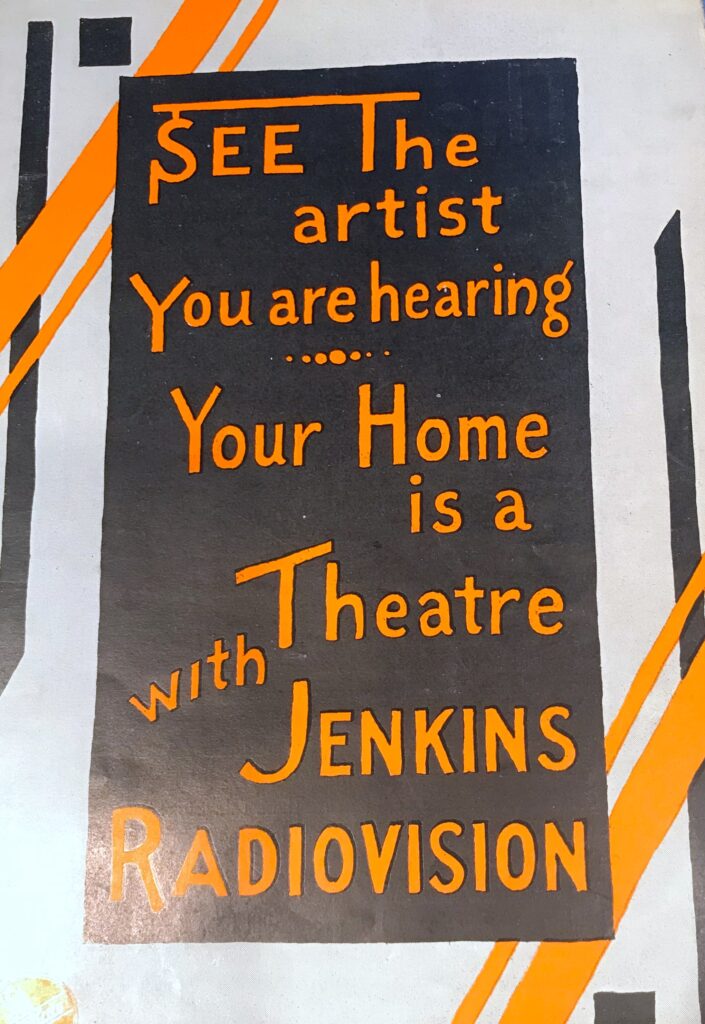
NB: the wiki: https://en.wikipedia.org/wiki/Charles_Francis_Jenkins for a full biography: “He published an article on ‘Motion Pictures by Wireless’ in 1913…”
Bart Lee, K6VK, CHRS Archivist and Fellow, AWA Fellow (twice awarded the AWA Hauck Award), ARRL Liaison


